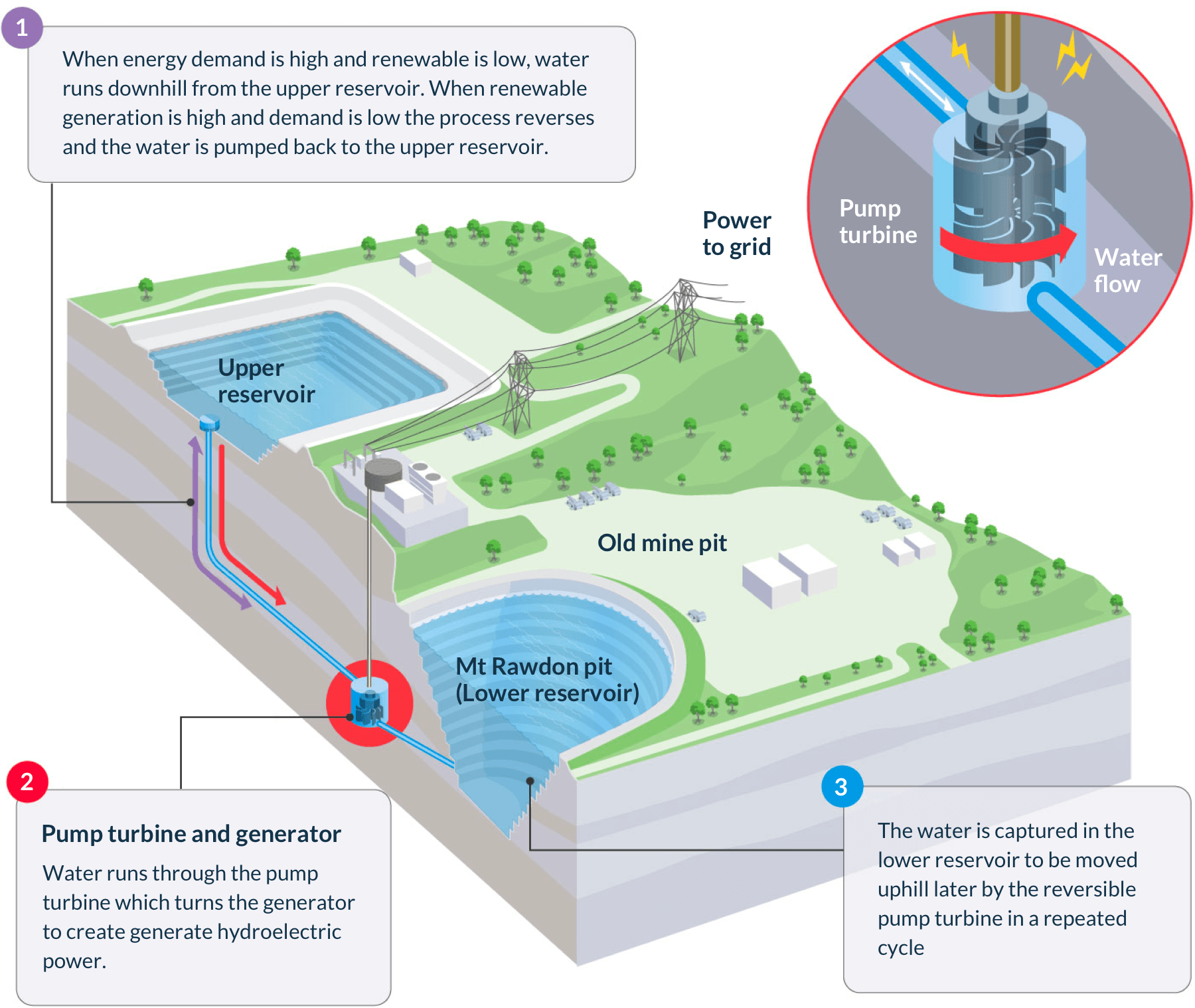Project Overview
CLEAN ENERGY, INTO THE FUTURE
Converting the Mt Rawdon operation into a sustainable low cost, large scale pumped hydro power station at the end of the mine’s production in 2024.
What is the Mt Rawdon pumped hydro project?
The Project is being developed by a joint venture comprising Mt Rawdon Operations Pty Ltd (a subsidiary of Evolution Mining), the owners and operators of the Mt Rawdon Gold Mine, and an investor group managed by ICA Partners. The joint venture is currently undertaking a feasibility study into the potential for a pumped hydro facility. The Project will store energy for use during peak morning and evening hours. The Project is located within, and adjacent to, the Mt Rawdon Gold Mine, and will comprise the following components:
- A purpose-built upper water reservoir created on land adjacent to the existing gold mine, capable of storing water required to generate 20,000 MWh of electricity
- A lower water reservoir created by repurposing the Mt Rawdon Gold Mine open cut pit, once mining of the pit is complete
- Waterway tunnels connecting the upper and lower reservoirs in a closed loop system
- An underground powerhouse that contains the hydro generation units
The project involves a range of geotechnical, environmental, social, economic and cultural heritage investigations.
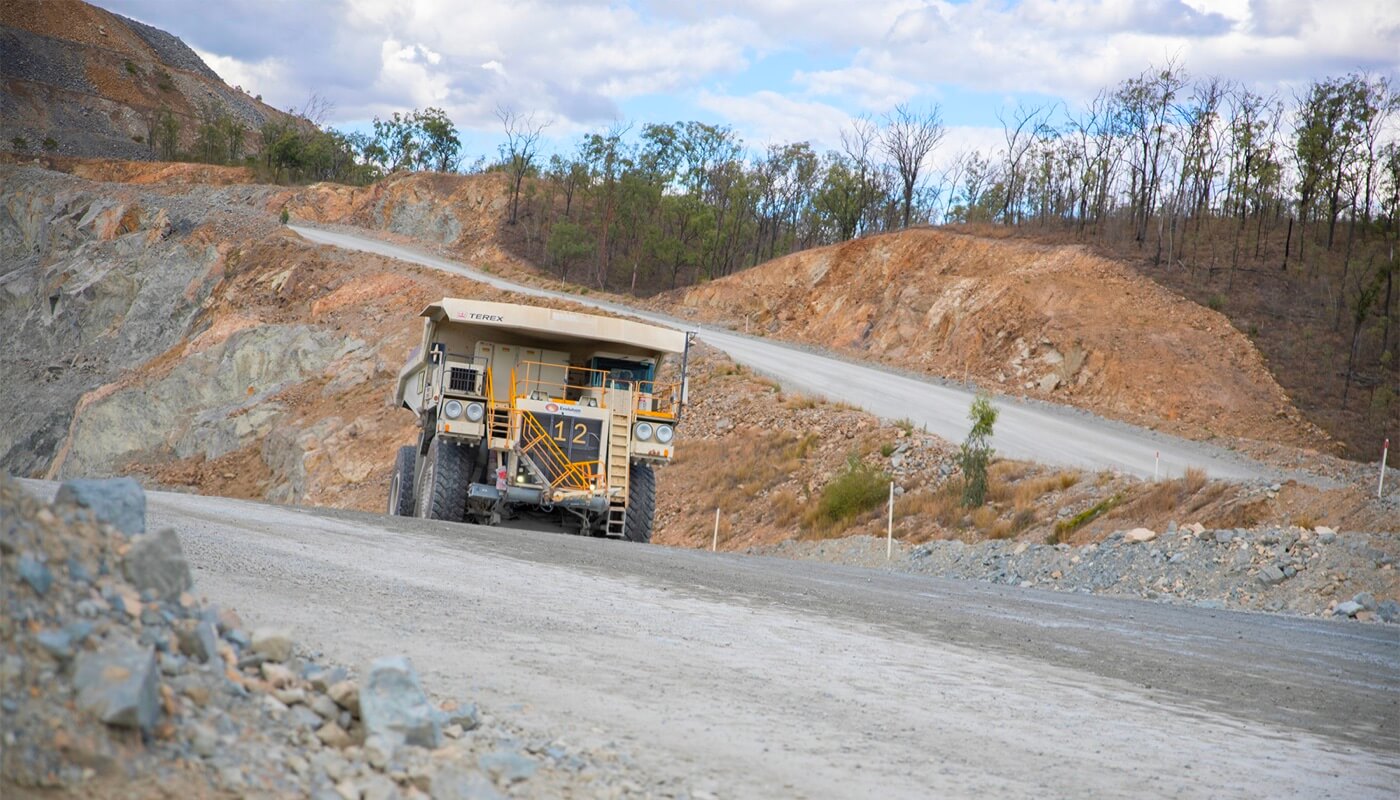
When is the project starting?
The proposed timeline of the Mt Rawdon pumped hydro project:
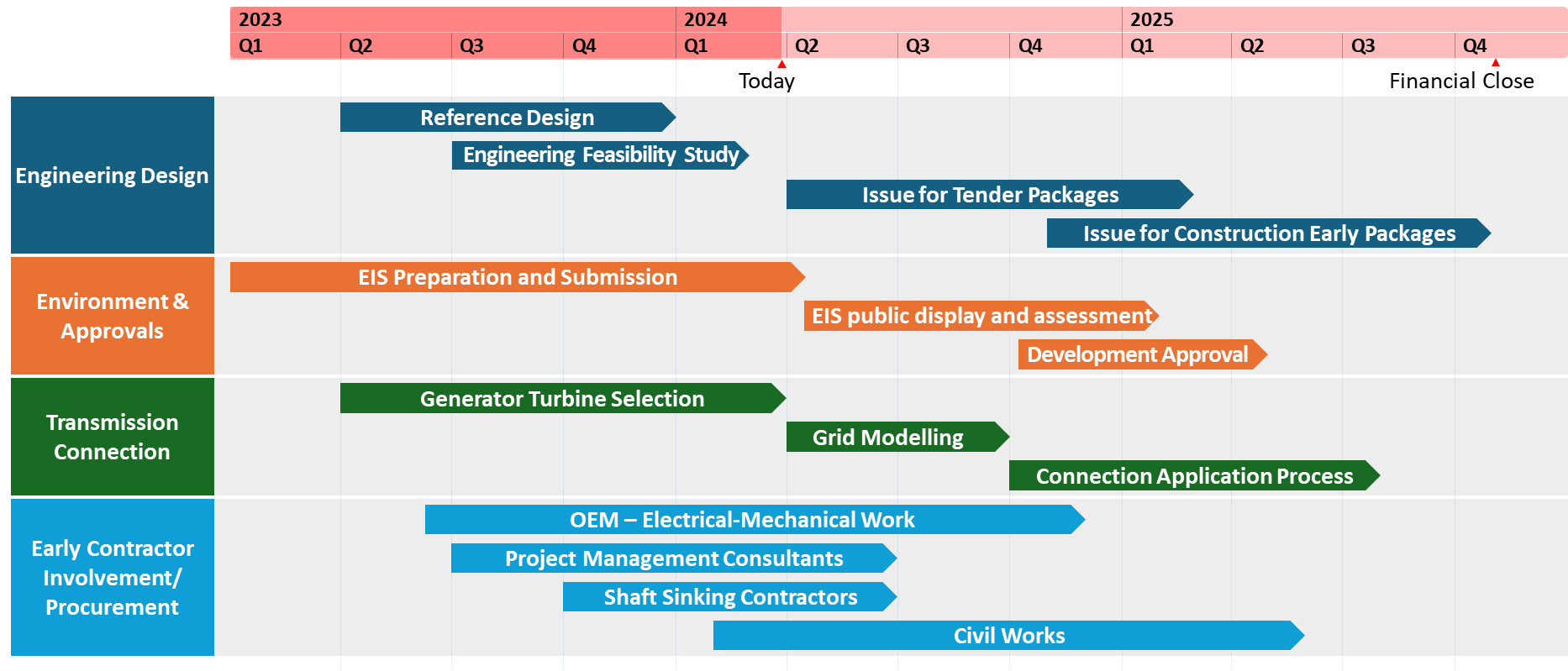
What is next for the Project?
In the coming months, the Project will complete the following:
- Submit the EIS to Office of Coordinator General for assessment and then public consultation.
- Continue to consult with the Queensland Government and SunWater about access to water for the first fill of the Project.
- Provide further Project updates in the form of newsletters and website update.
- Undertake Indigenous heritage field surveys on the pumped hydro site and proposed transmission route.
- Consult with the community, interest groups, local and state government.
- Continue to consult with the Queensland Government and Powerlink about the transmission connection for the Project.
Coordinated Project Designation
The Mt Rawdon Pumped Hydro (MRPH) Project was designated a coordinated project by Queensland’s Coordinator General. This confirmation of strategic significance to the state will streamline, but not reduce the requirements, of the approvals process across all government departments and agencies. The project’s Commonwealth environmental approval pathway has also been determined with preparatory works underway.
Project Approvals Process
Queensland’s Coordinator-General has now finalised the terms of reference (TOR) for an environmental impact statement (EIS) for the Mt Rawdon Pumped Hydro project. The Terms of Reference has been published and are available at the link below:
The Project continues to prepare the Feasibility Study in parallel to the Approvals processes. The underlying studies and due diligence processes are ongoing. For a large-scale project of this complexity, it is necessary and inevitable that we continue to conduct these activities in parallel with the Approvals.
While the release of the final TOR is a significant milestone for the Project, it really is just the beginning of the Approvals process.
Why is the Project Important?
Queensland has outstanding renewable energy resources, with renewable generation having tripled in the years from 2015 to 2022. The Queensland government is now aiming to have 70% of Queensland’s energy needs met by renewable energy by 2032 and 80% by 2035.
Most of our renewable energy comes from wind farms and solar PV, which are variable forms of renewable energy that generate electricity when conditions are right. Variable forms of renewable energy need to be complemented by energy storage, such as batteries and pumped hydro, which can store excess energy that is generated when the sun is shining and the wind is blowing and then release it back into the grid when it is needed.
The Mt Rawdon Pumped Hydro Project (the Project) will meet this need by providing low-cost and large-scale energy storage that will be a critical element in meeting Queensland’s renewable energy targets and its goal of achieving net zero emissions by 2050.
The Project is likely to create approximately 700+ jobs during construction and 25 to 30 jobs during operations
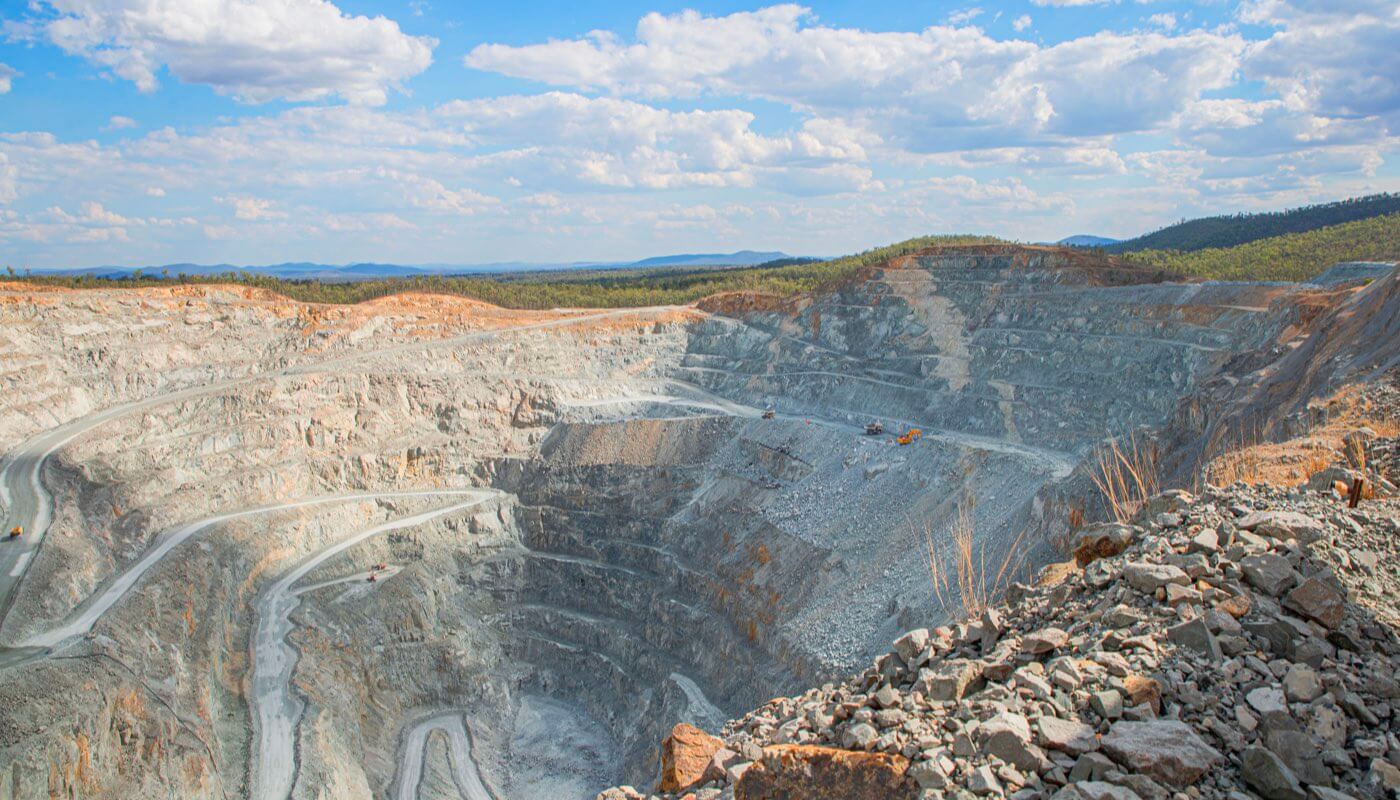
Sustainability is important to us and integrated into everything we do at Mt Rawdon.
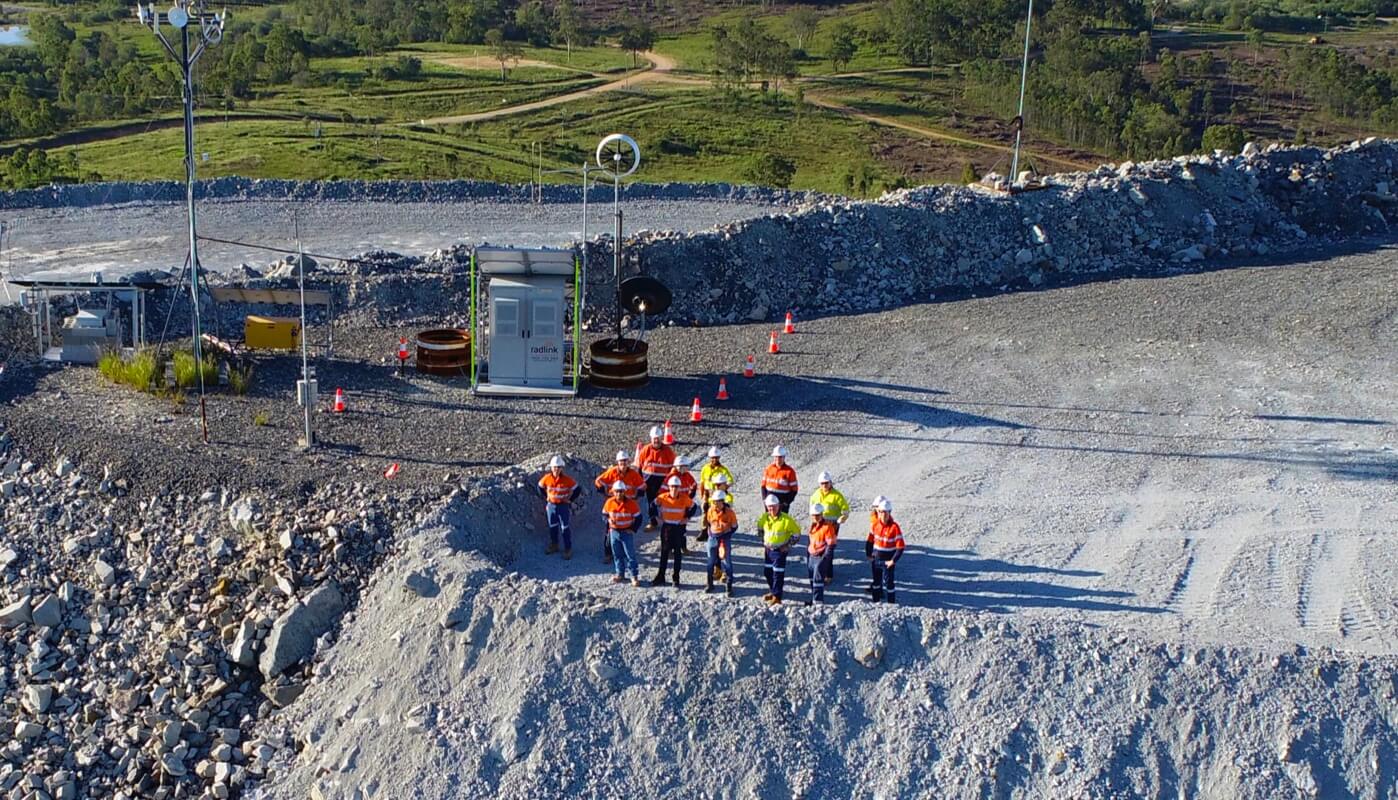
Positive impacts:
- Creating a new use for the Mt Rawdon Gold Mine which is due to cease mining in 2024 and cease ore processing in 2025.
- Generating 700+ direct jobs during the construction phase and is likely to create 25 to 30 permanent jobs during the operational phase.
- Facilitating increasing levels of renewable energy generation in Queensland. This will assist with grid stability and provide a significant portion of the additional 9 to 16GW of dispatchable electricity that the Australian Energy Market Operator has forecast is likely to be needed by 2040.
- Providing the lowest cost replacement for coal generation helping to lower greenhouse gas emissions consistently with the Paris Agreement.
- Potential to reduce peak demand energy pricing. The load shifting nature of pumped hydro would increase electricity supply to meet the evening demand and thus, help to alleviate peak electricity prices.
Mt Rawdon Pumped Hydro will help Queensland reach its goal of 80% renewable energy by 2035.
Sustainability is important to us at Evolution Mining and integrated into everything we do. Projects to date include:
For more information on our sustainability credentials head to the sustainability section on our Evolution Mining website:
Where is the proposed location?
The proposed location for the Mt Rawdon pumped hydro project is at Evolution Mining’s current Mt Rawdon operation. For information on the Mt Rawdon operation, click here.
Why is this Location Suitable for Pumped Hydro and why the project is required?
Most of our renewable energy comes from wind farms and solar PV, which are variable forms of renewable energy that generate electricity when conditions are right. Variable forms of renewable energy need to be complemented by energy storage, such as batteries and pumped hydro, which can store excess energy that is generated when the sun is shining and the wind is blowing and then release it back into the grid when it is needed.
The Queensland government is aiming to have 70% of Queensland’s energy needs met by renewable energy by 2032. As such the Mt Rawdon Pumped Hydro Project can assist with this need by providing low-cost and large-scale energy storage.
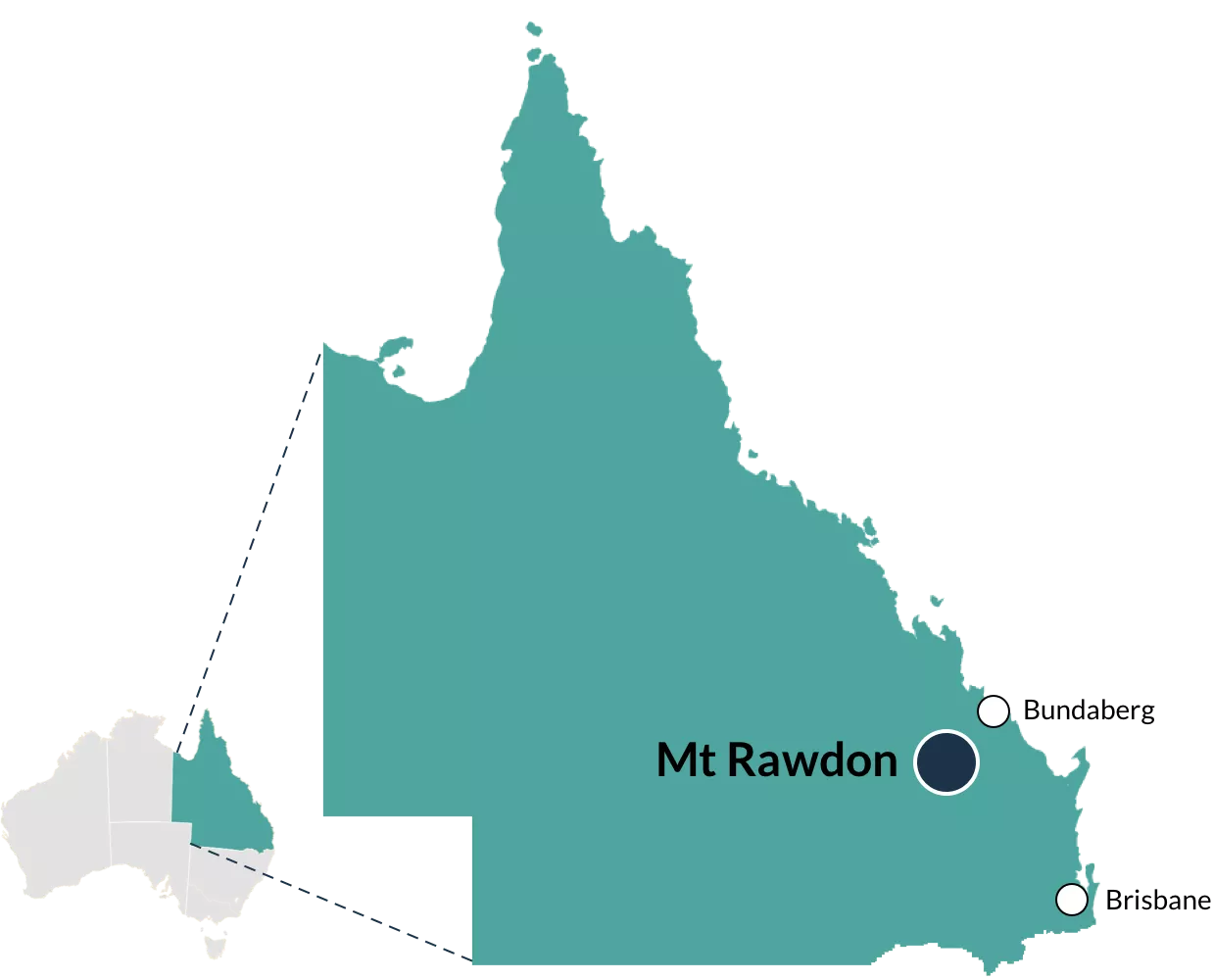
Why is this Location Suitable for Pumped Hydro and why the project is required?
- Gold reserves at Mt Rawdon will be exhausted in FY25, while processing of stockpiles will continue until FY26
- The mined-out pit had the volume and depth that makes it ideally suited to be repurposed as a lower reservoir
- The higher altitude land is in close proximity to the mine pit, is of a good elevation and provides a suitable location for the construction of the upper reservoir
- The properties of rock between the mine pit and the upper reservoir is well suited to supporting the tunnels and caverns required by the pumped hydro system
- The Mt Rawdon site is located with access to water infrastructure services and a high voltage transmission line located approximately 22km from the site
The layout of the project components have been refined through geotechnical, environmental and cultural heritage investigations.
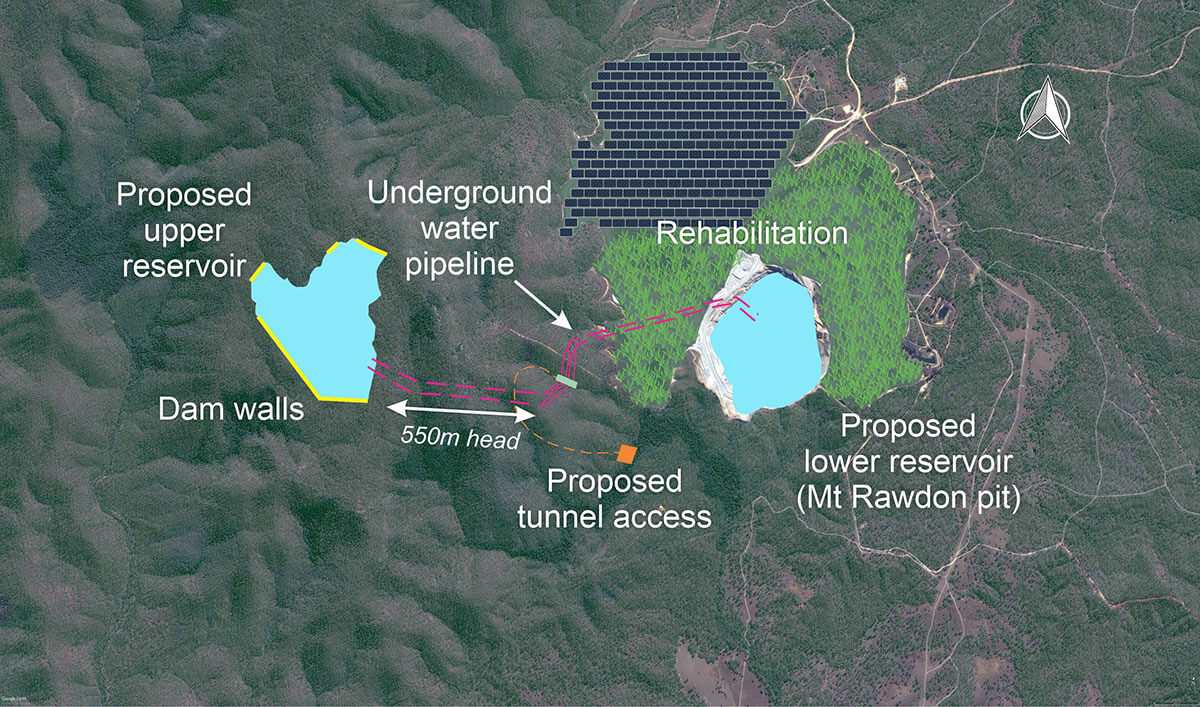
Project Layout
The Project layout has evolved since feasibility investigations first commenced and will continue to evolve in smaller ways as it progresses through to detailed design.
One of the significant steps to date has been the selection of the site known as ‘S1’ as the preferred site for the upper reservoir. The S1 site was selected from among three options for reasons including its larger storage capacity, proximity to the lower storage and the absence of an Environment Protection and Biodiversity Conservation (EPBC) Act listed plant species (Xanthostemon oppositifolius) that was found at one of the other potential sites.
Locations for other components of the Project (such as the construction compound and haul roads) are being identified through a process involving engineering design and fieldwork to identify environmental constraints.
The transmission line that will link the pumped hydro storage facility to the existing electricity transmission grid is the most significant remaining component for which a final location has not yet been identified. A study area for the transmission line was initially identified through a constraints analysis using environmental, social and economic data. Further studies and consultations with landholders are now occurring within that study area to identify a transmission line corridor that will minimise impacts on landholders and the environment.
How will the project work?
The Project will use two large bodies of water, named the upper and lower reservoirs. These reservoirs will be connected via an underground tunnel.
When there is a high demand (such as evenings) or a drop in the generation of wind or solar energy, electricity will be generated when water is released from the upper reservoir, travels through the underground waterway tunnel which will turn the hydroelectric turbine therefore generating renewable power. Water from the hydroelectric turbine will then be discharged into the lower reservoir.
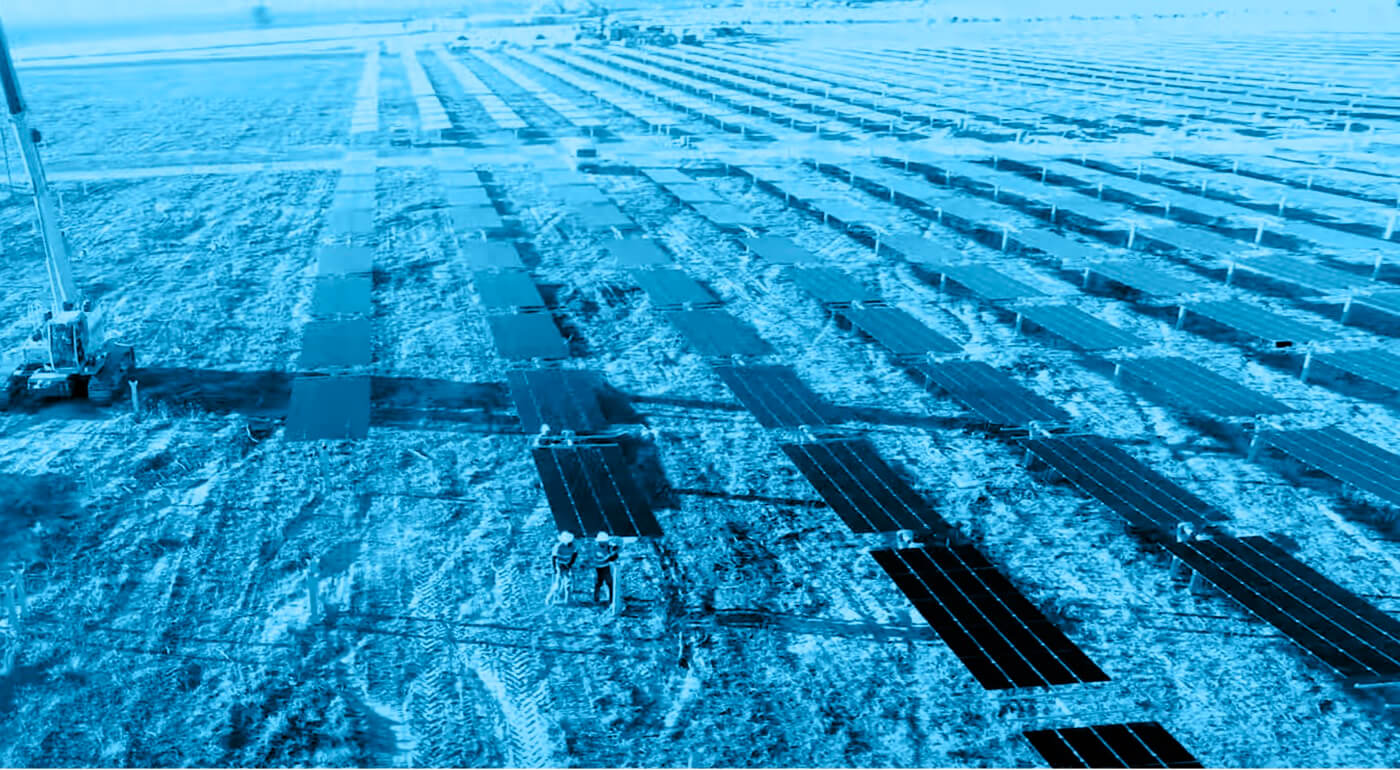
Water is pumped to the upper reservoir using excess energy (from solar or wind) when the network demand is low.
The Project will be a closed loop system, which means that once the upper reservoir is filled with water, that same water will continue to be circulated indefinitely between the upper and lower reservoirs (with the occasional top-up to account for evaporative losses).
Approximately 26GL of water will be required for the first fill of the upper reservoir. The first fill may occur over a period of three years, which will allow smaller volumes of water to be taken each year. The project is engaging with the government, Sunwater and other stakeholders to identify where, how and when the first fill water can be made available. Once filled to the level required for the pumped hydro operation, the closed loop nature of the system will mean that top-up water to compensate for evaporation can be sourced from within the existing mining lease entitlement at the Perry Weir.
HOW PUMPED HYDRO WORKS
